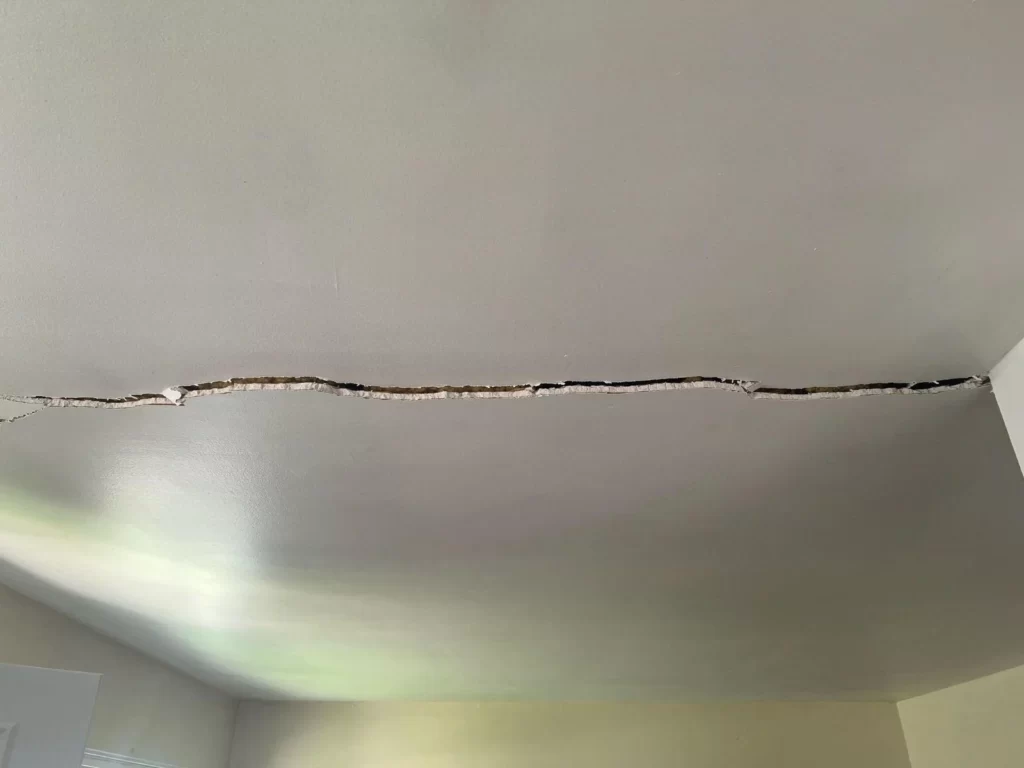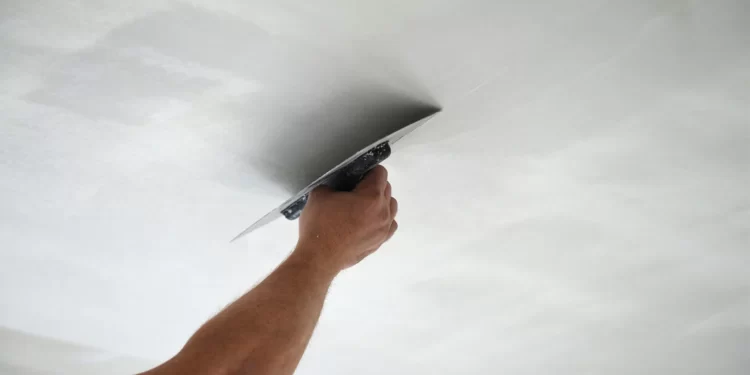You might have heard a lot about the cracking of ceiling plaster. It is usually very common in damp areas and older homes. They are a big sign of plaster damage and structural weakness in the building, which can lead to severe problems in the future. In this article, you will learn why the plaster ceiling cracking sound and how we can prevent it.
Why does the ceiling plaster crack?
There can be various reasons for the cracking of the ceiling plaster. Let us discuss them one by one.
1. Shrinkage of plastering
As the name signifies, this is the condition in which the ceiling plaster shrinks due to the sudden loss of moisture from the surface due to overexposure to sun or dry heat.
2. Structural issues
These types of cracks are formed due to the movement of the building and wall shrinkage. These cracks usually grow in straight lines.
3. Using poor material
Using cheap materials while manufacturing the building will lead the cracks to develop earlier, like using poor quality cement and adding excess amounts of sand and dust.
4. Vibrations
strong vibrations from nearby construction work or other sources have a significant impact on the stability of the plaster ceiling
5. Water lodging
Water leakage or plumbing issues from a source weaken the plaster and make it prone to cracking easily.
6. Poor installation
If the plaster was not applied correctly and evenly on the surface or if the proper technique of drying the surface before applying plaster was not followed at the time of plastering, it can lead to weak points and cracking.
How can you treat the plaster ceiling cracking?
Plaster ceiling cracks are a big problem, but treating them is not too difficult. So here are a few simple ideas that you can do to prevent it.
Filling the crack
You can fill the cracks after removing the old plaster from it. You can use a knife to give a smooth texture.
Mesh tape
If your ceiling has larger cracks, use self-adhesive mesh tape over the pre-filled cracks. It will give extra protection to the cracks.
Using a second coat
After drying one layer, you can apply another layer of the prepared compound and blend it carefully to provide extra strength.
Using primer and then paint
Using a primer over the plaster before applying the paint will not only add an extra layer but also give a uniform finish to the paint.

Tips to prevent your plaster ceiling from cracking
Always remember that prevention is the key, so try to use all these preventive measures. You will have to follow many measures to prevent your ceiling from cracking. It will need a collective approach of following a combination of methods that are explained below
1. Proper installation
Ensuring that the plaster is applied evenly on the surface with even thickness all over the surface. Use materials of good quality, and avoid using cheap materials.
2. Regular structural inspection
Checking regularly for any structural issues. To detect and find a better solution to resolve them as early as possible.
3. Check for any water leakage.
If there is any water leakage from the pipe, then it will undoubtedly lead to the cracking of the plaster. If you are finding any moisture, then inspect for the origin of the leakage and treat it.
4. Controlled drying
Allowing the plaster to dry completely before applying the paint over it. Avoid using it drying with artificial methods such as excessive heat. It will also make the life of the plaster longer.
5. Proper ventilation
Good ventilation will prevent the locking of moisture in the wall. Because moisture makes the plaster weak and it will crack more rapidly.
6. Avoiding vibrations
Excessive vibrations caused by nearby construction work or due to any other reasons make the plaster weak; hence, minimize the heavy vibrations by using proper insulation.
7. Professional help
If none of the above methods is working and the cracking is still proceeding on the ceiling, then ask for professional help from a structural engineer or professional contractor.
Conclusion
Cracking of plaster of ceiling is commonly seen in the walls prone to moisture or excessive sun exposure. However, it may have other reasons too. It is not very tough to treat these cracks and prevent them from further developing.
I hope this article was helpful to you. If you still have doubts, then you can contact us. We will resolve them as soon as possible.






